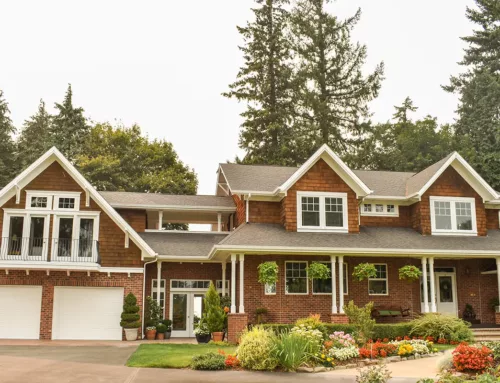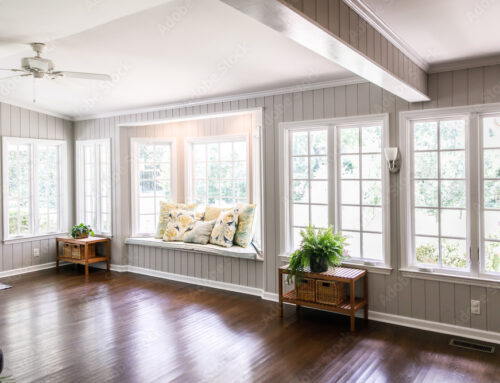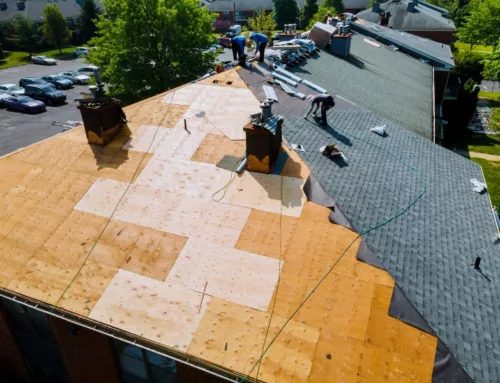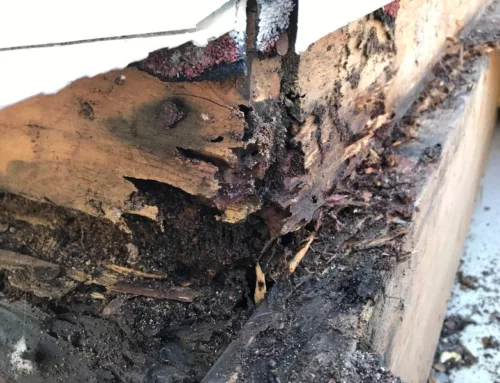Table of Contents
Can You Sell A House With Dry Rot?

Dry rot isn’t something any homeowner wants to deal with. It’s definitely possible that people will still want to purchase a home that has dry rot (“Selling A House With Dry Rot”). However, since the new owner will have to fix it, the chances of the home selling quickly goes down.
The size of the rot damage may play a bigger part in the sale than the actual rot itself. The larger the damage the harder it will be to sell. Regardless, addressing a dry rot issue before putting your home on the market will improve the chances of your house being sold.
Pro Tip: If your house has dry rot, Sister Siding specializes in a wide variety of home repair services including wood rot repair throughout the Portland area and the surrounding cities.
What Is Dry Rot?
Dry rot is a type of fungus that causes wood decay (“What is Dry Rot and How Can You Prevent it?”). This fungal formation stems from excessive moisture build-up in a specific area. The mold then feeds on wood, weakening it over time. It’s not always easy to detect and can look differently depending on the stage and severity of the rot.
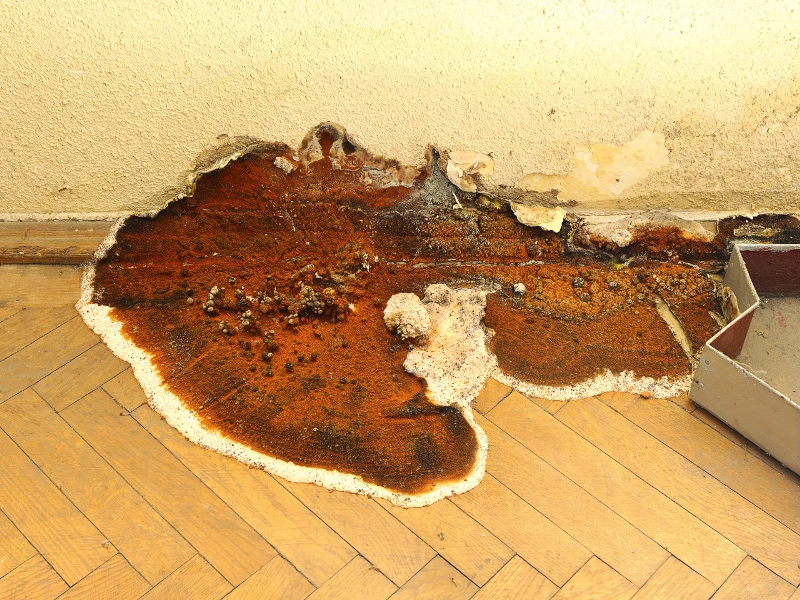
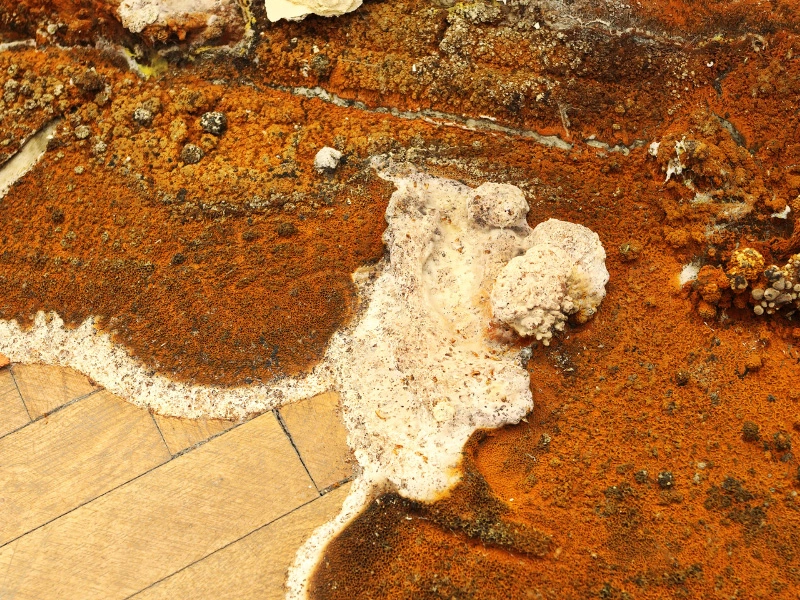
Understanding Dry Rot
Unfortunately, dry rot is one of those issues that begins minor and quickly escalates into a significant expense. In the ideal environment, it can spread up to three inches a day (“How Quickly Does Dry Rot Spread? ”). This may not seem like much, but when left untreated it can turn into a serious structural problem.
Indoor Dry Rot

Interior areas commonly affected by dry rot include the wood around leaky pipes, damp basements and poorly ventilated attic spaces. It can also be caused by water seeping in from the outside of a home (Trotta). Structurally, these indoor damages can spread to the exterior of a home as well.
Outdoor Dry Rot

Exterior areas of dry rot that affect selling your home include gutters, downspouts, and old wood barriers beneath your siding. Dry rot is aggressive and will make selling your property a lengthy and sometimes daunting process.
How Does Dry Rot Affect Selling Your Home?
Whether it’s interior or exterior dry rot, this type of wood deterioration will make your home less desirable than it could be without it. Dry rot will decrease the value of your home, and affect the market price (Bailey). You’ll probably have to sell your house for much less than you originally planned just to get someone to take it. With that being said, it’s wiser to fix the dry rot issue in order to sell your home for what it’s worth and make the selling process go quicker.
How To Fix Dry Rot
If your property is suffering from dry rot, you’ve likely found it because of seeing one of the following key components – brittle timber, distinct musty smells, damp areas, cracks in the wood, and mushroom-like fruit formations (“How To: Identify and Treat Dry Rot and Wet Rot”). When located, there are a couple ways to fix the decay.
- Remove and replace any rotted areas.
- Treat the rotted surface and the surrounding area with a fungicide to prevent regrowth and spreading.
- If the fungus has gone through walls or masonry, isolate the area and proceed with sterilization (“Dry rot – How to identify and treat dry rot”).
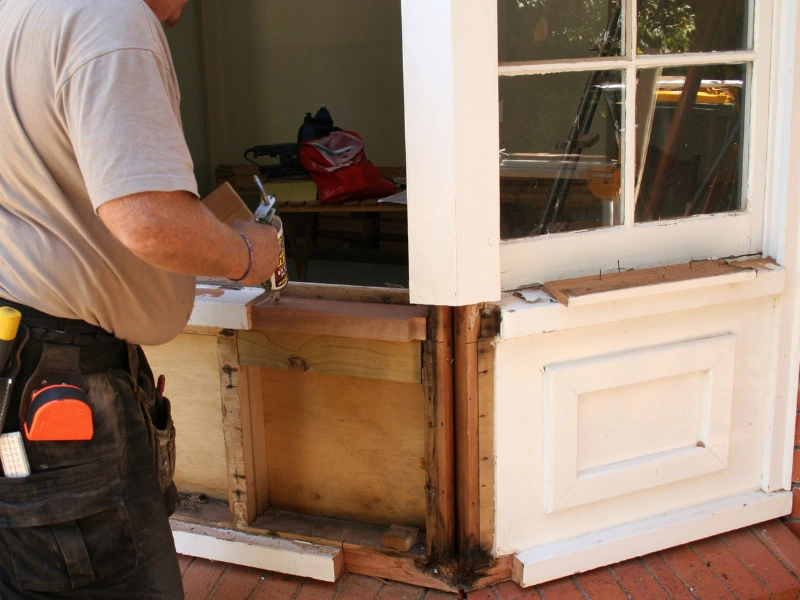
Pro Tip: Sometimes tackling dry rot isn’t as easy as 1, 2, 3. Especially when the growth of the dry rot is out of hand. Sister Siding is a Portland siding company with a team of dry rot repair experts that can assess rot damages and not only repair them but find the root of the problem so the rot doesn’t return. Our main goal is to leave your home intact and structurally sound for you and your potential buyers.

Dry Rot Spreads Rapidly
Dry rot spreads between spores (“Dry rot treatment”) and porous materials like wood. It can be hard to spot in the early stages, but once it starts it’s hard to stop. The entirety of the affected area needs to be removed and replaced. It’s a common misconception that simply painting over dry rot will stop it’s growth (“Why Replacing Rotted Wood is Important Before You Paint Your House”). This rot can thrive beneath surfaces and will continue to spread and damage any wood that is under the paint.
Pro Tip: Dry rot isn’t a type of mold that can just be washed away. It eats away at a structure until there’s nothing left to consume. Contact a local professional like Sister Siding to help get rid of dry rot if your treatment attempts aren’t working.
Can Dry Rot Spread From House To House?
Even if your house is in good condition and you maintain it well, the house next door has the potential to change that. Since dry rot spreads so quickly, it’s possible for the fungus to spread to surrounding houses. Rot will most likely travel if the conditions are livable for the fungus.
When the conditions are right, dry rot can spread quickly between homes that are connected. Whether it’s by way of beams, fences, or brick, dry rot will travel to find more food (Horton). It’s most likely to form when there is a combination of water and humidity in an area. If you notice this on or around your neighbors house, give them a heads up.

Pro Tip: Did you know that black mold can travel on clothing, boxes, or other surfaces being transferred from a house to house (“Are You Moving? Don’t Take Your Black Mold With You!”)? If you’re planning on moving from a mold infested home, be sure not to take it with you by keeping the humidity in your new house to a minimum, limiting its ability to grow.

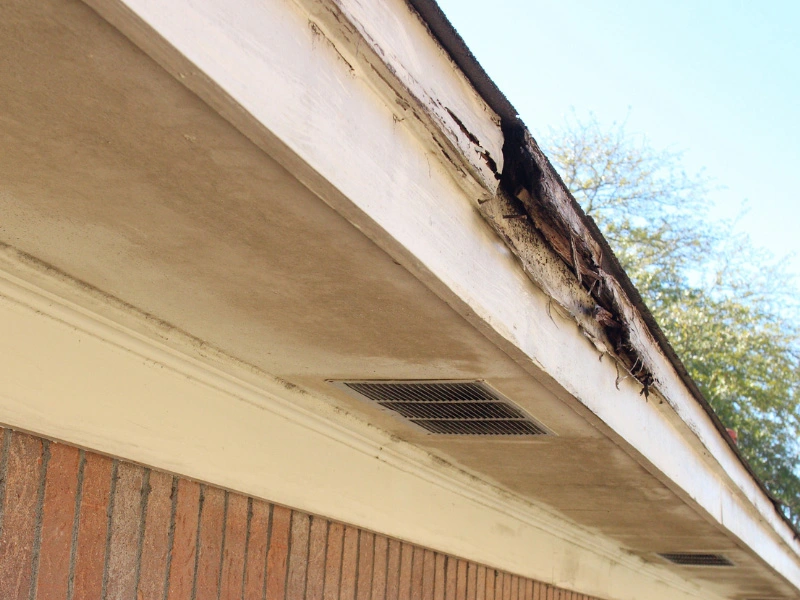
Where To Look For Dry Rot
Sometimes a house can look perfectly put together on the surface; what about underneath? The location of dry rot can vary but it typically includes places out of sight, like the basement or attic, the roof, as well as within walls, siding, decks, and beneath floorboards (“How To: Identify and Treat Dry Rot and Wet Rot”). You can also check exposed wood for soft spots; wood is meant to be solid and never soft (“Wood Rot 101: How to Prevent and Repair Its Damage”), so if you find soft spots you’re most likely dealing with rot or moisture damage that will turn into rot.
How To Avoid Dry Rot Growth On A House
It’s better to prevent dry rot before it begins. This will help you avoid the process of assessing damages and paying for repairs. Some ways to prevent dry rot from happening include thoroughly sealing basement and crawlspace floors, checking all home flashings to ensure that water drains effectively, properly ventilate and insulate attic and crawlspace areas, do yearly plumbing inspections to find pipe leaks, seal cracks, and regularly clean out gutters (Larusso).
Moisture is dry rot’s best friend. So much so that it can live in moisture levels of 22% (“Will Dry Rot Spread Without Water?”). To prevent mold from forming in and around your home, don’t allow water to pool—especially near wood! Keep water stagnation away from decks, siding, and fence posts. Ensure that garden hoses are tightly turned off and excess rain water is drawn away from siding by clean gutters.

Professional Dry Rot Removal And Repair In The Portland Metro Area
It’s essential to understand any issues in and around your property before listing it for sale. Especially when it comes to dry rot! Sister Siding services Portland, OR, and the surrounding cities. If you’re nearby give us a call so we can ensure you get every inch of dry rot out of your home whether you’re selling it or not.

